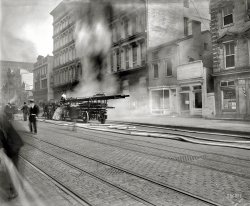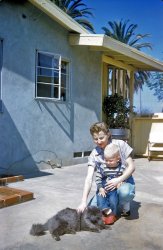
MAY CONTAIN NUTS

Search Shorpy
SHORPY ART

Framed or unframed, desk size to sofa size, printed by us in Arizona and Alabama since 2007. Explore now.
Join and Share
Ad-Free Shorpy
Shorpy is funded by you. Patreon contributors get an ad-free experience.
Learn more.

Recent comments
- Recent view
- Hudson’s Big Store
- Say what??
- Grapes?!
- A Beautiful Moment
- Such joy
- Bethune-Cookman University today...
- Yellow sky at morning
- Side Winder
- Air Quality?
- Sojourner Truth riot
- None were so blind(ed)
- The less famous sister
- Good ol' days?
- Rise and Fall
- Goo Goo Ga Joob
- Ticket Retention
- Not the only one
- Vagaries of War
- Killed by Amtrak
- Back to the Future
- Wanted --
- If you can't stand the light
- Centralized Traffic Control, I believe
- What's really happening
- Heckuva remote control!
- Sometimes — Things Go Bump!
- I SEE THE LIGHT
- Union Switch and Signal Company
- Get That Light Out Of My Eyes
Member Photos
The Shorpy
Print Emporium
Print Emporium
Search Shorpy
Search results -- 30 results per page
- A Very Kelly Christmas: 1940
- ... not pictured, is the sister-in-law.
Occupation: Pipe Carener (cleaner?)
Industry: Navy Yard
Commissioner Kelly ... Posted by Dave - 11/16/2018 - 5:35pm -
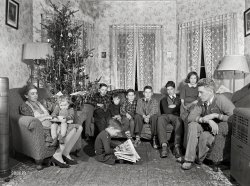
- Sweet Snuff: 1938
- ... Do I want to smoke it in a cigarette or smoke it in a pipe or dip it or snort it or chew it? The only delivery methods not advertised ... Posted by Dave - 06/23/2016 - 11:12am -
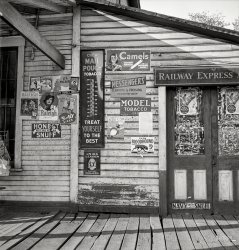
- Lord of the Stoves: 1901
- ... of a room with a pot-bellied stove and make the smoke pipe as complicated and twisting as possible to its exit through the wall or ... Posted by Dave - 07/08/2014 - 12:57pm -
![Lord of the Stoves: 1901 Chelsea, Michigan, circa 1901. "Glazier Stove Company shipping room." Heated by a Round Oak No. 20 stove. Detroit Publishing glass negative. View full size.
All stove upAnother of my many obsessions of childhood was stove pipes. In the late 40's and into the 50's, you could still see a few stove pipes rising from the back of older houses, usually out of lean-to type rooms (another obsession). I would draw pictures of a room with a pot-bellied stove and make the smoke pipe as complicated and twisting as possible to its exit through the wall or roof. I would have loved this picture, but would have wanted several more bends and elbows before exit.
Deja vu all over againJust when I think we're done with the Glazier Stove Company, you pull us back into it again.
Yet I'd do anything to have one of those old stoves in my kitchen. The utilitarian boxes that we call stoves these days are just boring.
OneJust had to continue the Tolkien reference:
One stove to heat them all and in the darkness shine for them.
Round OakRound Oak stoves were manufactured in my hometown of Dowagiac, in SW lower Michigan. Both sides of my family have history with Round Oak: great-grandfather on my mom's side managed the foundry, and his brothers worked in various administrative positions; both great-grandfathers on my dad's side were Polish immigrants who worked in the factory. Both of my grandfathers worked at Round Oak as well. I wonder where this particular stove ended up. They are quite collectible these days.
[If your dad is like most people, he would have had four great-grandfathers. - Dave]
Both of MY great-grandfathers on my dad's side...his grandfathers.
(The Gallery, DPC, Glazier Stove Works)](https://www.shorpy.com/files/images/4a20469a.thumbnail.jpg)
- Jurassic Park: 1942
- ... has been replaced (an upgrade?) based upon the shiny down pipe. Compare it to the engine in the background. Regarding the tubes, I had a ... themselves contain the very small diameter superheater pipe bundles. The superheater pipes heat the steam well past its boiling point, ... Posted by Dave - 02/17/2014 - 5:20pm -
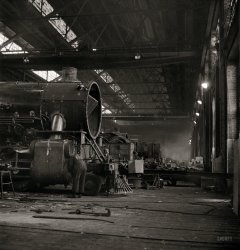
- The Potato Farmer's Daughter: 1940
- ... porch there is a structure that appears to be corrugated pipe... The wooden panel leaning against it looks as if it could be a cover, ... right looks like a well with a crank and chain. A thick pipe is visible under the porch - but why is the well standing on the porch? ... Posted by Dave - 06/07/2019 - 5:03pm -
![The Potato Farmer's Daughter: 1940 October 1940. "The daughter of Mr. Dave Labbee, French-Canadian potato farmer, outside their house near Wallagrass, Maine." Acetate negative by Jack Delano. View full size.
All the world's a stageWhat with the girl's beauty and that pose -- not to mention that skirt length and those hose -- hey! that rhymes! -- I am inclined to believe our little miss was enjoying the attention of the photographer. Must've been a warm October in Maine for her to strut her stuff "onstage" dressed like that. But then maybe she was merely walking across the porch and glanced over at the opportune moment. Either way, the young girl peeking through the screen door wants in on it.
[That's Mother. - Dave]
However ... when I was eight or nine, I used the long front walk of a big fancy house where we lived one summer rent-free -- true story; my "stepfather" was a con-man -- as a runway of sorts. With a parasol as my prop, I pranced up and down singing a song I'd made up. Presumably this was for the benefit of neighbors and passers-by, although I don't remember attracting any notice. I do know that there was no applause and certainly no photographer, and I have no idea what I wore. Probably shorts and a sleeveless top. But then that was Florida, where it's always warm.
Wood!So much to love about this photo, beginning with the wood: shingles on the roof, shakes on the wall, lap siding, rough-hewn boards for the stairs and deck, logs for the porch. I can smell it from here, across the border from French Canada where I live, almost 80 years away. Also love the plants in the cans (incl. Jewel shortening). But what’s that item standing up in front of the window on the right, beside the classic barrel? (The girl is great, too!)
Well, well, well?Could the thing in front of the window be a wellhead? It looks like it has a crank handle and rope around a spindle, and below the porch there is a structure that appears to be corrugated pipe... The wooden panel leaning against it looks as if it could be a cover, with a notch for a rope. But I'm just guessing.
Going to guessThat the item to the right in front of the window is a crank attached to a rope to draw water in a bucket from the well below.
Fragrant woodThe object standing in front of the window on the right looks like a well with a crank and chain. A thick pipe is visible under the porch - but why is the well standing on the porch?
And the girl was very bold and even provocative.
(The Gallery, Agriculture, Kids)](https://www.shorpy.com/files/images/SHORPY-8c03585a.thumbnail.jpg)
- TVA: 1942
- June 1942. Gas-welding a joint in a line of spiral pipe at the Tennessee Valley Authority's new Douglas Dam on the French Broad ... Posted by Dave - 08/08/2012 - 8:18pm -
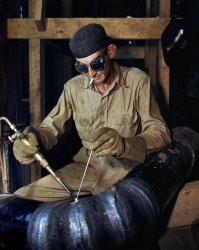
- Morris Lapidus: 1946
- ... in this photo: the acrylic table leg, the bowtie, the pipe, the nine framed parchments, or the cowhide on the chair. I vote for the ... Posted by Dave - 04/16/2014 - 9:05am -
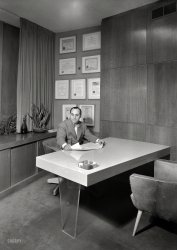
- Next Stop, Niketown: 1908
- ... assembly can be moved up and down the vertical pipe, to adjust the height of the goal.
(The Gallery, G.G. Bain, NYC, ... Posted by Dave - 05/25/2016 - 7:13pm -
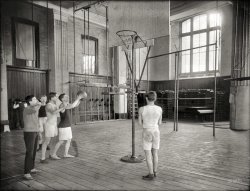
- Illinois Central: 1942
- ... the boiler in front of the cab, with it's sand delivery pipe running down the side of the firebox to deliver dry sand to the top of the ... With no moving parts, it takes steam from the boiler (the pipe connection at the top), sucks water from the tender (the connection below, ... Posted by Dave - 07/21/2014 - 12:40pm -
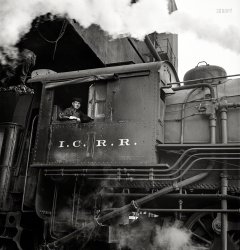
- Gas Giant: 1937
- ... that people inhaled it to commit suicide ("taking the gas pipe"). The tank-like structure, called a gasometer or gas holder, telescoped ... Posted by Dave - 06/14/2017 - 3:32pm -
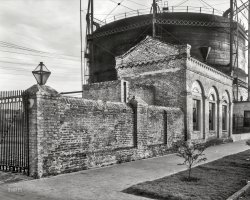
- Spook Hill: 1940
- ... was that it was late Victorian. Each room had a capped gas pipe, five feet off the floor, where once there was a sconce. At some point, ... Posted by Dave - 01/28/2018 - 6:35pm -
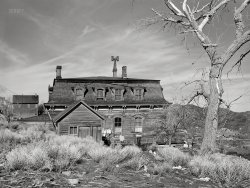
- Sloss Benzol: 1935
- ... the way, the Sloss company (eventually absorbed into U.S. Pipe) discovered that some of the byproducts of steel manufacturing were ... Posted by Dave - 09/02/2019 - 6:16pm -
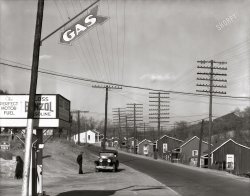
- Loosey & Rickety: 1939
- ... house was retrofitted for indoor facilities with a soil pipe attached to the outside of the home. It was probably a status symbol and ... Posted by Dave - 08/02/2019 - 1:15pm -
![Loosey & Rickety: 1939 November 1939. "Old house in Holmes County, Mississippi." Medium format negative by Marion Post Wolcott for the Farm Security Administration. View full size.
Fine and Fancy FilagreeI have never seen such delicate and intricate porch filagree - or as some say - gingerbread.
This looks like it could be Faulkner's inspiration... for Miss Emily's house in "A Rose for Emily" (1930)
[APPLAUSE]"Loosey and Rickety" -- best title ever!
Outdoor PlumbingIt looks like the house was retrofitted for indoor facilities with a soil pipe attached to the outside of the home. It was probably a status symbol and source of pride at some point.
But wait; what's that place today?A FRED and breakfast? Is there a station pumping ETHYL on the corner? Is the outhouse behind the house the LITTLE RICKETY?
(The Gallery, M.P. Wolcott, Rural America)](https://www.shorpy.com/files/images/SHORPY-8c10778a.thumbnail.jpg)
- Two Belles: 1906
- ... ahead. As for the wood stove , its clear there is a steam pipe right by the wheelhouse to supply the whistles . So the stove must be ... Posted by Dave - 10/16/2016 - 2:05am -
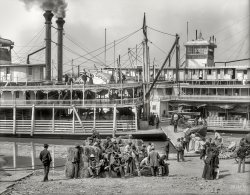
- Fairest of Them All: 1941
- ... tortoiseshell trim.
Stovepipe Is that a big stove pipe behind mom's face? Is the stove in the middle of the room? It just looks ... Posted by Dave - 01/24/2020 - 1:37pm -
![Fairest of Them All: 1941 March 1941. "Mother and child. Bedford County farm, Virginia." Medium format acetate negative by John Vachon for the Farm Security Administration. View full size.
Bobby PinBobby pins used to be everywhere. They were great if dangerous projectiles to shoot from a rubber-band powered hand-slingshot, making a satisfying whistling bullet noise.
Reflection of LifeJohn Vachon was a master with his camera. Catching the baby's face, plus mom's in the mirror is not an effortless task - especially keeping himself out of the picture. On another note, today's generation would consider the living conditions depicted here as "squalor" but was the norm for many of our ancestors who didn't give it much thought and were happy nonetheless. Sadly, I know some people today who could call CPS to report the conditions in which this child was living. Too much is taken for granted these days.
The look of love.A lovely, timeless photo. I'm suddenly thinking of my own mother, with tenderness. I hope you're thinking of yours.
Picture framesMy mom had five silver picture frames on the top of her bureau, the same size as those two with the man and the woman. The frames contained photos of her five children as little ones, and she had to polish the five frames about once a year, with Silvo and a rag, which she didn’t seem to mind. Also on the same bureau top was a silver set of brush and comb and mirror, with tortoiseshell trim.
StovepipeIs that a big stove pipe behind mom's face? Is the stove in the middle of the room? It just looks very strange to my eyes today in 2020.
[It's a stove ducted through a closed-up fireplace. -Dave]
(The Gallery, John Vachon, Kids)](https://www.shorpy.com/files/images/SHORPY-8c19250a.thumbnail.jpg)
- Backwater: 1937
- ... We are so far back in the sticks here, they had to pipe the sunlight in to it.
This road was originally the Jennings Brothers ... Posted by Dave - 04/25/2020 - 5:43pm -
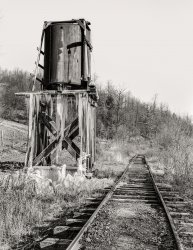
- Let's Chill: 1943
- ... aaahh memories!
Asbestos & Canvas Best pipe wrap ever.
Ice plant at the end This photo, taken in the Santa Fe ... Posted by Dave - 12/30/2012 - 7:29pm -
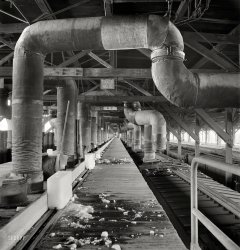
- Hollywood Dad: 1953
- ... Groucho's in the early sixties. I recognize the gauge of pipe, the horizontal bracing, the teeter-totter, and the chain links for the ... Posted by Dave - 03/02/2017 - 7:54pm -
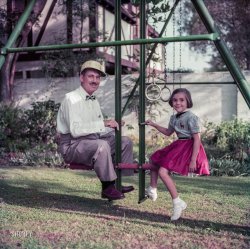
- Snowy Joliet: 1943
- ... each blade appears to be manually operated by means of a pipe that extends down each side of the mast to just above the ground and ... Posted by Dave - 12/24/2014 - 10:50am -
![Snowy Joliet: 1943 March 1943. "Joliet, Illinois. Leaving the Atchison, Topeka & Santa Fe railyard." Photo by Jack Delano for the Office of War Information. View full size.
Can't quite make it outKeep the door closed when ??????????? cars.
[Illegible in the original. -tterrace]
Sign, sign, everywhere a signMy take:
KEEP THIS DOOR
CLOSED WHEN NOT
WEIGHING CARS
Mixed Signals?That looks like a train order signal. Not motorized, each blade appears to be manually operated by means of a pipe that extends down each side of the mast to just above the ground and then... nowhere. No trackside racks for delivering orders/messages on the fly, no telegraph office visible... are there any Santa Fe experts out there who know what this signal might have been for?
WestboundMr. Delano was looking back from the caboose of a westbound train; the view is actually NNE. Des Plaines River/Sanitary and Ship Canal to the left, EJ&E bridge and Joliet Coke Plant in the background.
The Scale HouseAn important ancillary building once found in nearly every yard, but now less common, was the scale house.
Most cars containing bulk commodities such as grain, coal, and such were weighed - both to determine the weight for transportation charges by the railroad, and often for the charges the shipper would bill their customer for the merchandise. Every car had (has) the empty weight of the car stenciled on the side of the car, and the switching crew and a clerk would weigh each car, and subtract the Lt Wt (Light Weight, as stenciled) to determine the weight of the contents, and attach the scale ticket to the Bill of Lading.
Note that there are four rails past the scale house. The Live Rails were for weighing the cars, the Dead Rails (or Bypass Rails) were so that engines could pass the scale without using the Live Rails, since their weight often exceeded the capacity of the scale.
(The Gallery, Jack Delano, Railroads)](https://www.shorpy.com/files/images/SHORPY-8d26313u.thumbnail.jpg)
- The Handover: 1935
- ... and Prince Albert Ha! Methinks Mr. Harrison is a pipe smoker.
Transverse Injun That front bumper. Chief Pontiac. ... Posted by Dave - 10/07/2017 - 8:26pm -
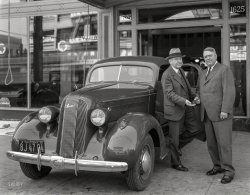
- The Winona: 1899
- ... View full size.
Look out below! I just love the pipe foot rails and handrails leading to the rungs built into the wall for ... Posted by Dave - 11/06/2017 - 2:36pm -
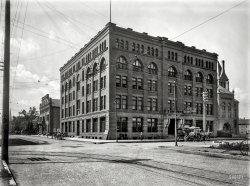
- Modern Family: 1941
- ... that today.
Looks like there is a plumbing, heating pipe, or wiring run back in the left corner of the room.
(The Gallery, ... Posted by Dave - 01/31/2019 - 10:40am -
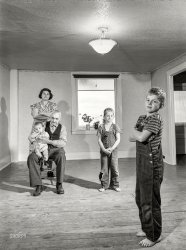
- Bare Beach: 1939
- ... features included the rear fenders, the gas fuel filler pipe integrated into the left rear fender, and the metal sign panels which were ... Posted by Dave - 07/18/2014 - 2:44pm -
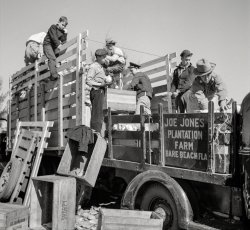
- Chapel Hill (Colorized): 1939
- The same Granger Pipe Tobacco poster on the wall is for sale on a Chicago based web site - Granger Pipe Tobacco Advertising Piece with Johnny Mize, St. Louis Cardinals. ... Posted by DonW - 07/18/2011 - 10:33pm -
![Chapel Hill (Colorized): 1939 The same Granger Pipe Tobacco poster on the wall is for sale on a Chicago based web site - Granger Pipe Tobacco Advertising Piece with Johnny Mize, St. Louis Cardinals. Autographed. Circa 1940's. $2000. View full size.
Was this originally black and white?What a wonderful image and colorization! What did it look like before you colorized it? Very envious of your talent shown here. I am at the beginning stages of efforts to colorize the digital images I have taken of glass plate negatives. Wonder if one can accomplish nearly the same quality of colorization with a digitized glass negative image as one could with a digitized positive print?
Great work!
[The monochrome version of Dorothea Lange's photo is here. - Dave]
(Colorized Photos)](https://www.shorpy.com/files/images/Chapel_Hill__1939__Colorized.thumbnail.jpg)
- Mom, Mac, Me
- ... a few plastic toys) 50 years later.
Also note the gas pipe stubbed out for the eventual built-in BBQ, right next to what appears to ... Posted by Mvsman - 09/13/2011 - 9:11pm -
- Mississippi Gin: 1890
- ... clothes dryer. I had my torch running to cut the existing pipe when it moved slightly and came in contact with some of the lint covering ... Posted by Dave - 05/25/2016 - 5:26pm -
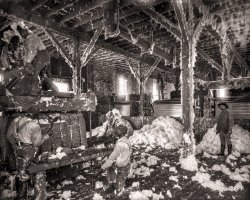
- Cherry Street Bridge: 1909
- ... tiles, piano, lumber, marine gas engines); the lengths of pipe in different sizes piled up at both ends of the bridge; the gentle traffic ... Posted by Dave - 09/18/2016 - 4:13pm -
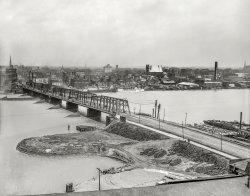
- Iced Up: 1904
- ... would lean Christmas trees against a pole that had a water pipe and spray head (as far as I remember). The pole, pipe and spray head are all still there, but they haven't created an ice ... Posted by Dave - 03/18/2014 - 11:48am -
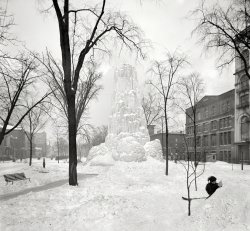
- Coal, Water, Sand: 1942
- ... some years ago and we often switched out a couple of pipe yards that were at the bottom of a hill. If it was early morning with ... Posted by Dave - 12/30/2013 - 12:29pm -
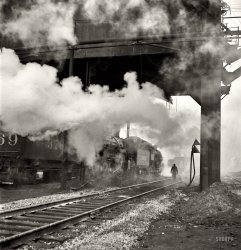
- Fire on F Street: 1913
- ... worked its way back and burned the gas meter from the feed pipe. The flow of gas from the open pipe combined with the gases generated from the smouldering coal bunkers made ... Posted by Dave - 12/06/2012 - 2:46pm -
